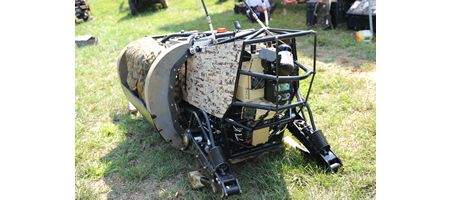DARPA’s been showing off two robotic ‘pack mule’ prototypes developed as part of its Legged Squad Support System (LS3) program.

Since its first outdoor test earlier this year, the design has been steadily improved, to the point that two functioning platforms are now showing what they could one day do carrying gear for a squad of soldiers and interpreting verbal and visual commands.
“We’ve refined the LS3 platform and have begun field testing against requirements of the Marine Corps,” says Army Lt. Col. Joe Hitt, DARPA program manager. “The vision for LS3 is to combine the capabilities of a pack mule with the intelligence of a trained animal.”
During the demo (see below), the LS3 prototype trotted and jogged, showed off its perception visualization demonstration and carried out orders.
It’s less noisy than it used to be, too. “LS3 is now roughly 10 times quieter than when the platform first came online, so squad members can carry on a conversation right next to it, which was difficult before,” says Hitt.
Other improvements include the ability to go from a 1 to 3 mph walk, trot over rough, rocky terrain, easily transition to a 5 mph jog and, eventually, a 7 mph run.
“The LS3 has demonstrated it is very stable on its legs, but if it should tip over for some reason, it can automatically right itself, stand up and carry on,” says Hitt. “LS3 also has the ability to follow a human leader and track members of a squad in forested terrain and high brush.”
Testing is set to continue over the next two years, culminating in a Marine Corps Advanced Warfighting Experiment, with the LS3 mbedded with a squad for an operational exercise.
“Augmenting small dismounted units with autonomous capabilities can be a potent force multiplier,” says Brig. Gen. Mark R. Wise.
“The concerted efforts being made to better define autonomous robotic capabilities that help lighten the load provide greater mobility and agility to dismounted Marine and U.S. Army forces across the battle space.”






